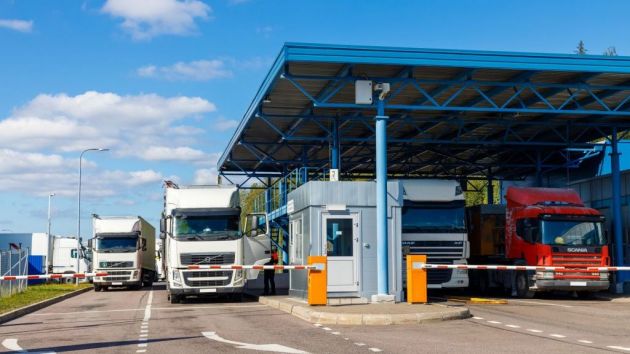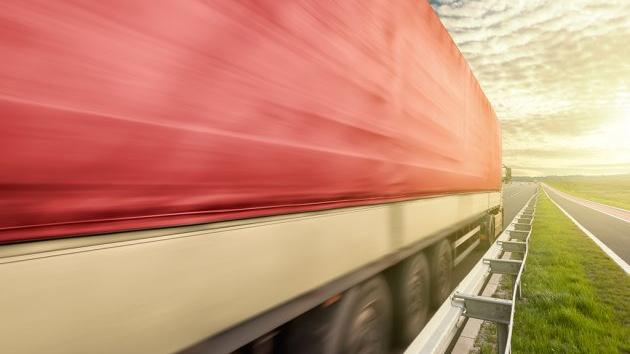Krone proves by example - average fuel consumption can be reduced by even two liters per 100 km
Source: eKapija
 Tuesday, 06.05.2025.
Tuesday, 06.05.2025.
 23:13
23:13
 Tuesday, 06.05.2025.
Tuesday, 06.05.2025.
 23:13
23:13
Krone Profi Liner (Photo: Zoran Samardžić)

To chronic problems, such as the lack of qualified, experienced drivers, the Covid pandemic "joined" broken supply chains - which is a difficult task to solve even for the most experienced logisticians; legislators in the European Union, environmental organizations and lobbyists are insisting more and more aggressively on (expensive and extremely questionable) total decarbonization of classic truck transport - read: the complete electrification of all categories of vehicles; diesel fuel prices fluctuate frequently, and war operations in Ukraine and on part of Russian territory have already been "invoiced" to European road carriers and the world economy in large amounts, unfortunately only partially, because the final, high "reckoning" is yet to come.
With such "incoming" challenges, road hauliers, regardless of transport volume and fleet size,
survive more and more difficult, under the threat that further negative changes in the business environment could bring many companies to the verge of bankruptcy.
On the Serbian road transport market, the situation is becoming even more difficult, because the listed pressures on established activities this year are joined by the announced or already completed closure of foreign investors` production facilities (the number is unknown for now) who, in the past ten years, have hired domestic road transport companies for the export of products or semi-products made in our country, in many cases as the exclusive choice for performing those services.
Although it has been striving to optimize the use of its attached vehicles for years through constant development improvements, the German Krone is particularly insisting on advice at this very moment which can reduce the predictable costs of transportation by conventional diesel-powered trucks.
Whether a tractor and semi-trailer or a solo truck and trailer is used predominantly in the city, on suburban or regional routes or on the highway, the operational profile has a decisive influence on the cost of transportation, or, as it has been emphasized more and more lately - on ownership costs.
Krone`s customers often have mixed transport requirements in which the vehicles are used flexibly, especially for so-called general and collective loads. In a typical urban-suburban semi-trailer and trailer distribution (but also smaller vehicles with specialized superstructures) they move through urban areas - urban or suburban, where regular routes are often used, for example when delivering items to supermarkets.
Only for long-distance transport is the transport-logistics "equation" simple: the share of highways exceeds 80 percent. Hence the first factor which affects the optimization of transport costs is the deliberate choice of an adequate means of transport. That is why sellers of Krone vehicles, right from the first conversation with a potential customer, insist on details that will help make a cost-effective and sustainable choice: what types of cargo will mainly be transported, what will be the average vehicle loads, at what distances the vehicles will be used, what are the main topographical and climatic parameters…
Another important factor for a more economical (and more competitive) transportation is the reduction of variable input costs. On average, such expenses account for slightly more than 40 percent of variable costs – in all usage profiles, from short to medium and long routes and relate to vehicle maintenance and repairs (including tyres, oils, braking equipment), insurance and taxes.
By Krone`s calculations, expenses for fuel and salaries of employees are in the lead - they amount to slightly less than two-thirds of the total current costs.
Some of these costs can be reduced significantly, for example, with the correct choice of tires. Significant savings can be made on long-haul transport if both the towing vehicle and the trailer are equipped with tires with the lowest possible rolling resistance.
Tires manufactured with the most advanced development solutions and with the use of high-quality materials can save up to 2.5 percent of fuel compared to "tires" of classic construction. For example, when a C-rated tire is replaced by an A-category tire, the reference vehicle (from Krone`s example) consumes an average of 26.2 liters per 100 kilometers instead of 27.58, which is a five percent savings.
The net weight (empty) of the trailer also affects diesel consumption: Krone`s calculations show that in practice 0.15 to 0.2 percent can be saved for every 100 kilograms less unladen weight. That`s why Krone`s trailers are getting lighter every year (consequently with a higher useful load), without affecting the structural strength and driving characteristics.
Krone lifting axle (Photo: Krone NemaÄŤka)

A lifting axle (whether on the towing vehicle or the trailer or both) is another advanced technical solution which can contribute to a lower average consumption of the traction "ensemble". If it is installed on vehicles that travel more than 60,000 kilometers annually with an average load less than 20 tonnes, the investment in the "lifting" axle pays for itself after about two years. The lifting axle is recommended for the transport of mass loads with a large share of so-called empty runs, i.e., in the supply of parts for the automotive industry, when the vehicle (tractor with semi-trailer) is returning - for reloading it returns empty or only with containers/carriers of parts.
Krone lifting axle (Photo: Krone NemaÄŤka)

Krone offers several types of semi-trailers with a lifting axle, as well as a semi-trailer, which is intended mainly for transportation for the supply of the automotive industry and the needs of similar production industries (Profi Liner, Mega Liner).
Aerodynamic additional parts reduce the air resistance of the towing and trailer vehicle and can reduce consumption. These are, for example, side linings (in jargon, better known as "skirts")
which can be in different places under the semi-trailer floor - on a pallet transport box, but also for "covering" the gap between the tractor and the semi-trailer. Reducing the cd (drag coefficient) value by five percent saves one to two percent of diesel, a 10 percent lower cd value lowers the average consumption by even two to four percent.
Krone Mega Liner Comfort open (Photo: Krone NemaÄŤka)

A confirmed example from Krone`s customer base: reducing the cd value by 10 percent reduced the reference vehicle`s fuel consumption from 27.58 to 26.75 liters per 100 kilometers, a saving of three percent.
In order to achieve the mentioned savings through optimal aerodynamics it is important that the subsequently installed parts have a mass not exceeding 200 kilograms, but to be robust (side panels, for example, are susceptible to damage during side loading/unloading). Retrofit aerodynamic accessories are usually cost-effective because investments for their purchase are amortized already after two years.
Krone assures that a noticeable difference in average consumption can be achieved with the combination. As an illustration, they take the example of a semi-trailer used in the transport of parts/components for the automotive industry. A large number of Serbian carriers have such vehicles in their fleets, which provide services to dozens of foreign component companies operating in our country.
In the empirical test carried out in the European Union, a base vehicle with semi-trailer equipped with C-rated tires under full load consumed an average of 27.58 liters of diesel per 100 km; when the tractor was towing a semi-trailer with low rolling resistance tires on its wheels, and it was equipped with aerodynamic accessories weighing 150 kg (which reduced the cd by 10 percent) average consumption was only 25.43 liters/100 km, which is 2.15 liters or 7.8% less than the base vehicle!

Click here to see the entire Special Edition Newsletter
"TRANSPORT AND LOGISTICS - Ready to move the impossible?"
read more
Companies:
 Sejari d.o.o. Beograd
Sejari d.o.o. Beograd
Tags:
Krone
Sejari
trailers
semi-trailers
tractors
tires
fuel consumption
how to reduce fuel consumption
transport costs
logistics
road transport of goods
thematic newsletters
special edition newsletter Transport and Logistics 2025
TB The driver of Business development
Comments
Your comment
Most Important News
Full information is available only to commercial users-subscribers and it is necessary to log in.
Follow the news, tenders, grants, legal regulations and reports on our portal.
Registracija na eKapiji vam omogućava pristup potpunim informacijama i dnevnom biltenu
Naš dnevni ekonomski bilten će stizati na vašu mejl adresu krajem svakog radnog dana. Bilteni su personalizovani prema interesovanjima svakog korisnika zasebno,
uz konsultacije sa našim ekspertima.


 Izdanje Srbija
Izdanje Srbija Serbische Ausgabe
Serbische Ausgabe Izdanje BiH
Izdanje BiH Izdanje Crna Gora
Izdanje Crna Gora


 News
News












